Eight bite-size facts about your teeth
Do you know how many teeth you will have in your lifetime? Which animal are your teeth most similar to? And do you know what the first toothbrushes were made of?
With Radio 4’s In Our Time getting to the root of the issue, we’ve pulled together some fascinating facts about fangs for you to feast on. Get your teeth into these…
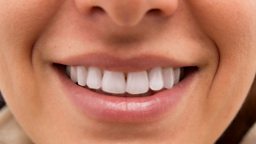
1. Your teeth might have evolved from taste buds
Looking back half a billion years, the ancestors of sharks and humans had no teeth in their mouths at all, or even jaws. They were armoured fish, sucking in their food!
How vertebrates developed teeth is undetermined but theory has it that either their tooth-like scales began to appear in their mouths as teeth, or some of their taste buds became harder.
2. Your teeth develop in the womb
Our teeth begin to develop before we are even born, though they won’t then come through until we are between six and 12 months old.
Most children have a full set of 20 milk or baby teeth by the time they're three years old. Then, on reaching five or six, these teeth start to fall out in order to make way for adult teeth.
When’s the best time to brush your teeth?
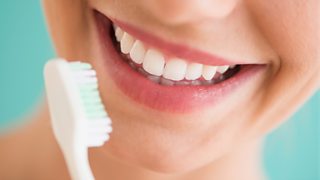
Let's settle a teeth cleaning dispute - should you brush before or after meals?
3. You have around fifty teeth in your lifetime
By the age of 12 to 14 we will have our adult teeth, of which there are 32 in total. Four of these are our wisdom teeth and these usually emerge later than the others, between the ages of 17 and 21.
Only two thirds of each of your teeth are actually visible – the rest is hidden inside your gum.
Whereas the total number of teeth we have is around 50, with most of those having to last from childhood, great whites can produce around 100,000 teeth throughout their lifetime. Some species of sharks produce a new set of teeth every two weeks!
4. Your teeth are genetically the same as a shark’s
We may not be able to make new teeth like a shark but the ones we do have are almost identical to those in the mouths of the aquatic predator and, in fact, almost all fish. The genes are the same across the board.
Learning more about shark teeth and how they regenerate could eventually teach us how to grow new human teeth in later life. With our lives getting longer and our diets getting more acidic we could certainly do with more!

5. You have four different types of teeth
Rather than regenerating our teeth, humans have become more focused on forming teeth in a specific shape for a specific function.
Incisors: Our incisors are the four front teeth on the top and bottom jaw and these are used for cutting and chopping food and passing it through to the back of our mouths.
Canine: Our canine teeth are the sharp, pointy teeth on either side of our incisors that help to tear food.
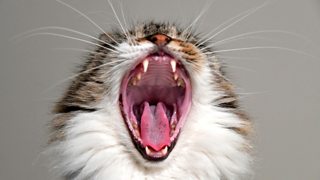
Premolars: Our premolars are wider teeth used for crushing and grinding food.
Molars: Our molars are stronger yet - these mash our food until it's ready to be swallowed safely.
Together these make us effective omnivores – we’re great at chewing plant matter as well as tearing up meat.
(Other mammals’ teeth have developed in different ways: a cow’s mouth is full of large molars for grinding down grass whereas a cat’s molars are more blade-like to shear through meat.)
6. A tooth has four different layers
A human tooth is made up of four main layers. Shiny enamel coats the tooth. This is the hardest substance in the body and protects the sensitive inner parts of the tooth.
Underneath that there is a dentine block, another hard substance. This surrounds a core pulp cavity, which contains the nerves and the tooth’s blood supply.
A fourth tissue is involved in the attachment of the tooth to the jawbone and that’s the cementum.
Only two thirds of each tooth is actually visible - the rest is hidden inside our gum.
"I wish I'd left my teeth alone"
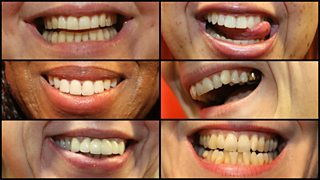
Journalist Nicole Mowbray had cosmetic work done on her teeth and now urges those who don’t really need it to steer well clear.
7. Your teeth are as unique as your fingerprints
.

Just like your fingerprint, your teeth and how they are arranged in your mouth are unique to you.
This is why dental records are often used to identify human remains.
Even identical twins will not have exactly the same set of teeth.
(Interestingly, the surface of our tongue is also one of a kind, with its own unique shape and texture.)
8. The first toothbrush dates back to 3500 BC
Toothbrush-like tools, such as a stick with a frayed end, date back to 3500-3000 BC – the era of Babylonians and the Ancient Egyptians.
The first known bristle brushes to resemble the toothbrush we know and love date back to the Tang Dynasty and around 700 AD. These were comprised of a handle made from animal bone or bamboo and hog hair bristles.
If mouthwash is your thing then thank your lucky stars that you’re not living in Ancient Rome. The Romans used sterile urine to rinse out the mouth!
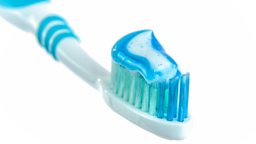
More from Radio 4
-
![]()
In Our Time: The Evolution of Teeth
Melvyn Bragg and guests discuss ideas about the origins of teeth.
-
![]()
Mind the Gap
The gap-toothed smile - diastema - creates an unforgettable smile which can cause some of us to go weak at the knees.
-
![]()
The real historical events that inspired Game of Thrones
True historical incidents and characters that helped inspire George R. R. Martin.
-
![]()
Eight tips for keeping calm in times of confusion
Tactics for how to keep calm, clear the mind and regain focus.




